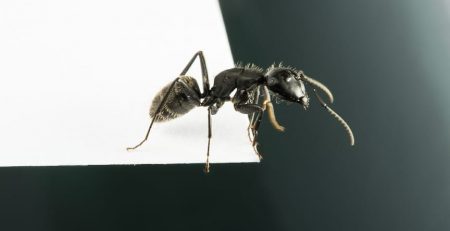scientists find an abundant amount of Nanodiamonds
The majority of North America’s megafauna-mastodons, short-faced bears, giant fround sloths, saber-toothed cats and American camels and horses-vanished about to 13,000 years ago at the closing of the Pleistocene period. Scientists have been debating the reason for this massive extinction. UC Santa Barbara’s James Kennett and a group of scientists, professor emeritus in the department of Earth Science, hypothesize that a comet collision with Earth was a major role in the extinction. Their theory suggests that a cosmic-impact event precipitated the Younger Dryas period of global cooling about 12,800 years ago. This impact caused nasty environmental stress and degradation that played a part to the extinction of most large animals living in North America. This major event and climate change also led to the vanishing of the prehistoric Clovis culture, known for its hunting, and to human population decline, according to Kennett. Kennett and an international group of scientists have concentrated on the character and distribution of nanodiamonds, a type of material produced during such an odd collision. They found a bunch of these tiny diamonds spread out over 50 million square kilometers across the Northern Hemisphere at the Younger Dryas boundary (YDB). It is a thin, carbon-rich layer is sometimes visible as a thin black line a few meters below the surface. This was published in the Journal of GeologyKennett and the investigators from 21 universities in six countries inspected nanodiamonds at 32 sites in 11 countries in North America, Europe and the middle east. Kennett and investigators from 21 universities in six countries investigated nanodiamonds at 32 sites in 11 countries across North America, Europe and the Middle East. “We conclusively have identified a thin layer over three continents, particularly in North America and Western Europe, that contain a rich assemblage of nanodiamonds, the production of which can be explained only by cosmic impact,” Kennett said.
“We have also found YDB glassy and metallic materials formed at temperatures in excess of 2200 degrees Celsius, which could not have resulted from wildfires, volcanism or meteoritic flux, but only from cosmic impact.” The team discovered that the YDB layer had bigger than the average amounts of cosmic impact spherules, high-temperature melt-glass, grapelike soot clusters, charcoal, carbon spherules, osmium, platinum and other materials. They found several forms, cubic and hexagonal crystals.”Different types of diamonds are found in the YDB assemblages because they are produced as a result of large variations in temperature, pressure and oxygen levels associated with the chaos of an impact,” Kennett explained. “These are exotic conditions that came together to produce the diamonds from terrestrial carbon; the diamonds did not arrive with the incoming meteorite or comet.”
Due to multiple testings, the team discovered that the majority of the materials in the YDB samples are nanodiamonds. They figured out that they consistently occur in the YDB layer over broad areas. “There is no known limit to the YDB strewnfield which currently covers more than 10 percent of the planet, indicating that the YDB event was a major cosmic impact,” Kennett said. “The nanodiamond datum recognized in this study gives scientists a snapshot of a moment in time called an isochron.” Scientists only know of two layers, where more than one identification of nanodiamonds has been found: the YDB 12,800 years ago and the Cretaceous-Tertiary boundary 65 million years ago, where the location of the mass extinction of the dinosaurs, ammonites and many other groups.”The evidence we present settles the debate about the existence of abundant YDB nanodiamonds,” Kennett said. “Our hypothesis challenges some existing paradigms within several disciplines, including impact dynamics, archaeology, paleontology and paleoceanography/paleoclimatology, all affected by this relatively recent cosmic impact.”














